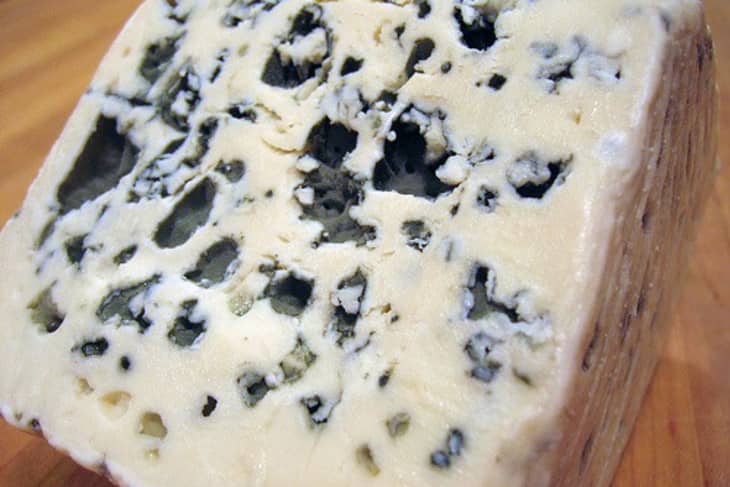The Cheesemonger: Why is Blue Cheese Blue?
Cheese nerds, come hither. Have you ever really thought about why blue cheese is the color that gives it its name? And what’s the key element necessary to activate that blueness?
Blue cheeses are unique for many reasons, but most significantly, they stand out from the other families of cheese because of the way they ripen. While most other cheeses are bacteria-ripened, like washed-rind cheeses, blue cheeses ripen from mold activity. And, simply put, this mold, whose spores are introduced into milk at the beginning stages of cheesemaking, is blue.
But it’s not that simple. Blue mold won’t grow just because you add it to milk. When a wheel of blue cheese is formed, it’s actually white in color, inside and out, like the wheels of Bayley Hazen Blue from Jasper Hill Farm, above.
It’s only when a cheesemaker pricks those wheels all over with long steel needles that the blue mold will start to proliferate. Those needle pricks introduce oxygen to the inside of the wheels. Without the oxygen, blue mold can’t grow. It’s the key to blue mold survival. Once oxygen is introduced, blue mold begins to travel outwards, closer to the rind, ripening the cheese as it migrates outwards.
Blue cheese is the only style of cheese that ripens from the inside-out as opposed to the outside-in. (Reason #2 that makes blues unique.)
Often, you can actually see the distinct paths of blue, like long striated lines, like at the top of the the slice in the picture at left. Or you’ll see small circular holes where the needle went into the wheel and where blue mold began its growth, like in the picture of Roquefort at the top of the post.
And sometimes, if it’s been freshly cut off a wheel, a new slice of blue cheese will become bluer and bluer before your very eyes, a trick that’s sure to impress if you can time it right.
Related: The Cheese Monger: Bleu de Gex
(Images: Flickr users Brother O’Mara and dewet licensed under Creative Commons and Nora Singley for the Kitchn.)
